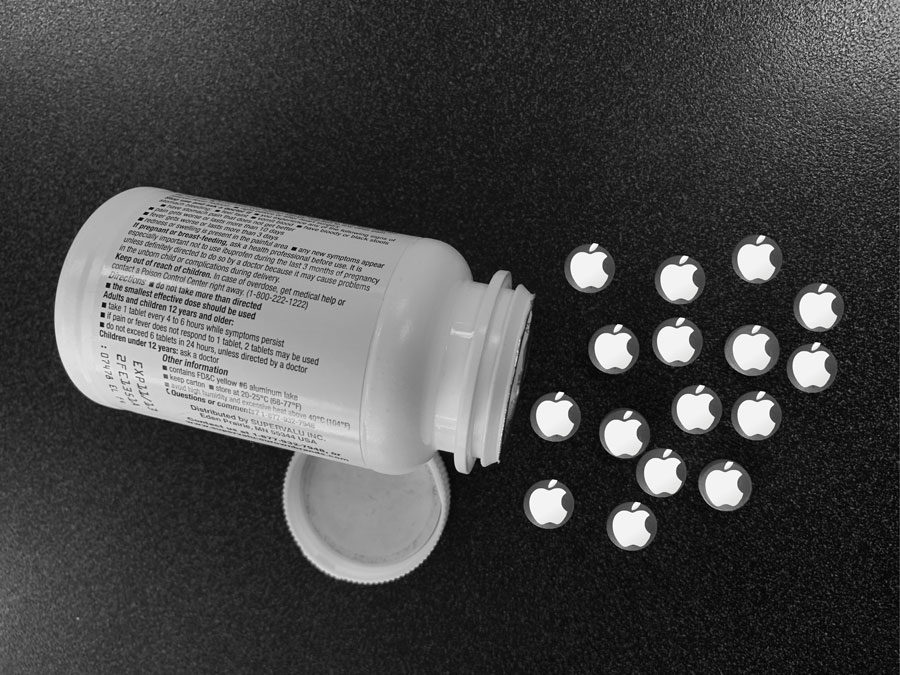Smartphones: The Drug We Abuse Every Day
March 5, 2019
There’s no denying that our smartphones have become an essential in our lives, just like brushing our teeth or combing our hair in the morning. But unlike our toothbrushes, it has many negative effects that can affect the way our brain functions throughout the day.
What’s going on in our brains?
A Korean researcher found that teenagers who were “addicted” to their phones had significantly higher levels of GABA, a neurotransmitter that inhibits neurons. This is the same neurotransmitter that is present in high levels in the brains of people addicted to alcohol, drugs, and gambling. This imbalance can trigger feelings of anxiety and panic when the addiction isn’t satisfied, and it also contributes to poor attention and control.
Another study found that people who frequently use multiple forms of media at once (chronic multitaskers) tend to have a smaller gray-matter area in the part of the brain responsible for top-down attention control, like setting a goal and sticking to it.
What are the risks?
Other studies have found connections between excessive smartphone usage and impaired memory, lack of creative thinking, and reduced attention span. Not only is our mental health affected by smartphone and internet use, but this research has suggested that it might actually affect the structure of our brains.
Researchers in San Francisco have also found a host of short-term consequences among teens and adolescents who are heavy users of tech. These include heightened risks for depression, anxiety and, in extreme cases, suicide.
Addiction is no accident.
“The tech companies do know that the sooner you get kids, adolescents, or teenagers used to your platform, the easier it is to become a lifelong habit,” Vijay Koduri, a former Google employee, told Business Insider. “It’s no coincidence,” he said, “that Google has made a push into schools with Google Docs, Google Sheets, and the learning management suite Google Classroom.”
A student who performed in the “Smartphone Addiction Reasons and Solution” study at Sultan Qaboos University said, “Smartphone manufacturers play an important role in making people addicted to smartphone use. For example, they continue to upgrade these devices and develop new functions and applications to increase their benefits, which forces the consumer to change their devices constantly to follow these changes. As a result, the customers’ usage rate continues to increase.”
According to Chris Weller, writing in Business Insider, “Turning kids into loyal customers of unhealthy products isn’t exactly a new strategy. Some estimates find that major tobacco companies spend nearly $9 billion a year, or $24 million a day, marketing their products in the hopes kids will use them for life. The same principle helps explain why fast-food chains offer kids’ meals: Brand loyalty is lucrative.”
Two points of view
“I’m constantly checking my phone, even if nobody has texted,” says Avery Carter, a freshman at Santa Fe High. He continues, “I check my phone about every three minutes, and I could probably only go a day without my phone before I’d want it back. The reason I’m attached to my phone is because of my music, Snapchat and Instagram.”
Che Muller, a senior, has a different take. “Phones can be used as tools for communication for our parents, but we all know that’s a joke,” he said. “Really, all of us high school kids use phones for pointless things like streaks (on Snapchat) or to show people what’s happening in our lives. But who really cares about how many people see your story or like your pictures on Instagram? That’s never going to matter in life, and I question why it matters now.”
A way out/solution
There is good news, though. In the same Korean study, 12 teenagers who suffered from smartphone addiction underwent cognitive behavioral therapy, which is a form of psychotherapy that treats problems and boosts happiness by modifying dysfunctional emotions, behaviors, and thoughts. After nine weeks of therapy, their GABA levels were normalized.
But even without the therapy, teens can make improvements for themselves. Researchers encourage students to stop looking at their phone during class by turning off all notifications and putting it on Do Not Disturb mode. They can also limit the number of times they look at their phone during the day by participating in an activity or hobby.












